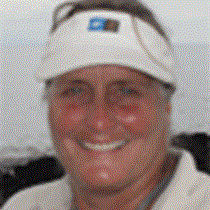Urvina Bay & Punta Moreno, Southern Isabela Island
This morning dawned cloudy and cool with a flat, calm sea. We dropped anchor off the western coast of the largest island of the Galápagos Archipelago: Isabela. Isabela makes up more than half the land area of the Galápagos, as all the other islands combined are still fewer square miles than this large, seahorse shaped land mass. The island is composed of six shield volcanoes that are joined by extensive lava flows. On 5 of these volcanoes we find distinct species of giant tortoises.
This morning we visited the shoreline along the base of Volcan Alcedo. There were several options to choose from: a 2.5 mile hike, kayaking followed by a short half mile hike or the short hike alone. The weather and sea conditions stay nice long enough for us to offer a second round of kayaking! Everyone had a chance to swim after their chosen activities.
We sent a large group of hikers along the coast, over six foot high lava boulders and then on a loop trail that took them into the hot interior. The hikers were surprised to find bleached coral boulders far inland; this section of the shoreline was uplifted in 1954 as a result of the subterranean movement of volcanic magna. Guests on both the short and the longer walks were pleased to find several large, colorful land iguanas this morning. The iguanas posed for many photos and then continued with their very slowly paced life, which this morning involved mostly just lying there.
After lunch Naturalist Ernesto gave a power point presentation about Charles Darwin and then led the “lava hikers” on a two mile walk onto a huge, expansive lava flow that spreads many miles between Cerro Azul and Sierra Negra volcanoes. They were surprised to find several brackish pools in the midst of the barren flows which are oasis-like homes to shore birds, ducks and a few bright pink flamingos! Meanwhile Gilda and I took our guests on a panga ride. We explored mangrove lagoons where we found sea turtles and rays (both eagle rays and marbled sting rays) in the still waters and pelicans nesting in the shrubs. We found a white washed lava shelf where over a dozen penguins and many huge marine iguanas rested in the fading golden afternoon light. A flock of swimming penguins approached the Zodiac and peered curiously at us. All afternoon frigates, boobies, Galápagos shearwaters and noddy terns were in a feeding frenzy beyond where the Islander was anchored. We could observe how large tunas chased schools of panicked sardines to the surface where they we then attacked by mobs of hungry sea birds.
The sunset just a few minutes past six o’clock - a fiery orange glob that sunk slowly beyond the horizon and left a pink and orange glow behind. The feeding frenzy died down, more penguins climbed ashore and we returned to the ship for dinner and rest.
This morning dawned cloudy and cool with a flat, calm sea. We dropped anchor off the western coast of the largest island of the Galápagos Archipelago: Isabela. Isabela makes up more than half the land area of the Galápagos, as all the other islands combined are still fewer square miles than this large, seahorse shaped land mass. The island is composed of six shield volcanoes that are joined by extensive lava flows. On 5 of these volcanoes we find distinct species of giant tortoises.
This morning we visited the shoreline along the base of Volcan Alcedo. There were several options to choose from: a 2.5 mile hike, kayaking followed by a short half mile hike or the short hike alone. The weather and sea conditions stay nice long enough for us to offer a second round of kayaking! Everyone had a chance to swim after their chosen activities.
We sent a large group of hikers along the coast, over six foot high lava boulders and then on a loop trail that took them into the hot interior. The hikers were surprised to find bleached coral boulders far inland; this section of the shoreline was uplifted in 1954 as a result of the subterranean movement of volcanic magna. Guests on both the short and the longer walks were pleased to find several large, colorful land iguanas this morning. The iguanas posed for many photos and then continued with their very slowly paced life, which this morning involved mostly just lying there.
After lunch Naturalist Ernesto gave a power point presentation about Charles Darwin and then led the “lava hikers” on a two mile walk onto a huge, expansive lava flow that spreads many miles between Cerro Azul and Sierra Negra volcanoes. They were surprised to find several brackish pools in the midst of the barren flows which are oasis-like homes to shore birds, ducks and a few bright pink flamingos! Meanwhile Gilda and I took our guests on a panga ride. We explored mangrove lagoons where we found sea turtles and rays (both eagle rays and marbled sting rays) in the still waters and pelicans nesting in the shrubs. We found a white washed lava shelf where over a dozen penguins and many huge marine iguanas rested in the fading golden afternoon light. A flock of swimming penguins approached the Zodiac and peered curiously at us. All afternoon frigates, boobies, Galápagos shearwaters and noddy terns were in a feeding frenzy beyond where the Islander was anchored. We could observe how large tunas chased schools of panicked sardines to the surface where they we then attacked by mobs of hungry sea birds.
The sunset just a few minutes past six o’clock - a fiery orange glob that sunk slowly beyond the horizon and left a pink and orange glow behind. The feeding frenzy died down, more penguins climbed ashore and we returned to the ship for dinner and rest.




